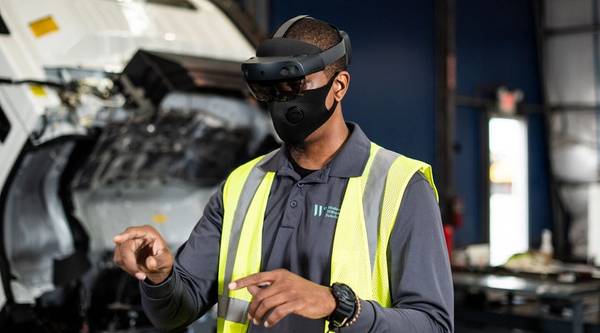
Wallenius Wilhelmsen is using new digital training tools that incorporate virtual reality (VR) and augmented reality. The next step is training that does not require written or verbal communication.
The company’s Zeebrugge terminal has a diverse workforce including 34 different nationalities. In situations like this, says the company, communication can be a barrier to training, so a new training program is being developed by the Digital Accelerator team and local Health and Safety Department.
“We are developing this new method of safety training by omitting any form of written (except the use of logos), and verbal communication,” says Stephanie Mazzotta, Innovation lead, Digital accelerator. “Utilizing a combination of teaching methods derived from the University of Cambridge and Montessori, anyone – no matter what languages they speak or level of technical training – will be able to comprehend the training. This also provides us with a very scalable template to use in other locations and for other use cases.”
Another tool being used by Wallenius Wilhelmsen is HoloLens. Staff can put on the HoloLens headset to experience three-dimensional holographic images as though they are a part of their operational environment.
For example, an installer at one of a vehicle processing facility can put on the headset to see how to install an accessory on the exterior of a car and what tools are needed. When someone is wearing the headset, they can see where the accessory needs to be installed on the vehicle, the motions needed to properly install the item, and the tools needed to complete the task.
Much like the VR tool in Zeebrugge, the HoloLens ensures all employees receive the same training.
In an effort to minimize stress and injury to staff, the company is also testing a computer vision software to identify and measure ergonomic risks when completing certain tasks. This tool creates an ergonomic skeleton of a person while completing a task and turns different colors to point out areas of risk.
For example, the tool can identify proper lifting posture when handling heavy equipment to ensure less strain on a person’s back, or to avoid injuring other parts of the body when moving around potentially dangerous areas of a facility.



